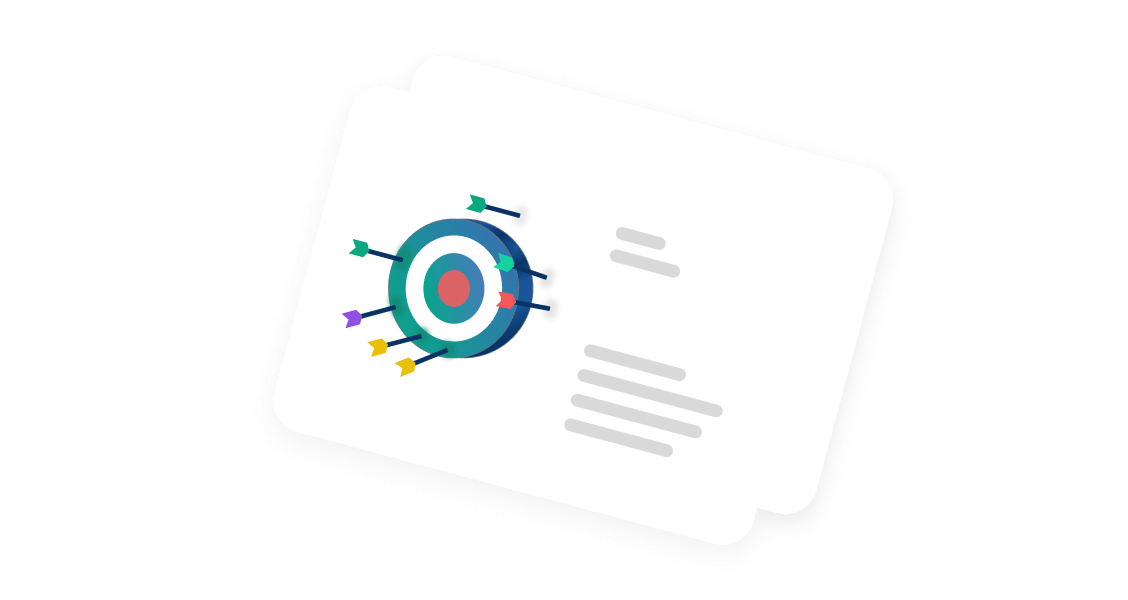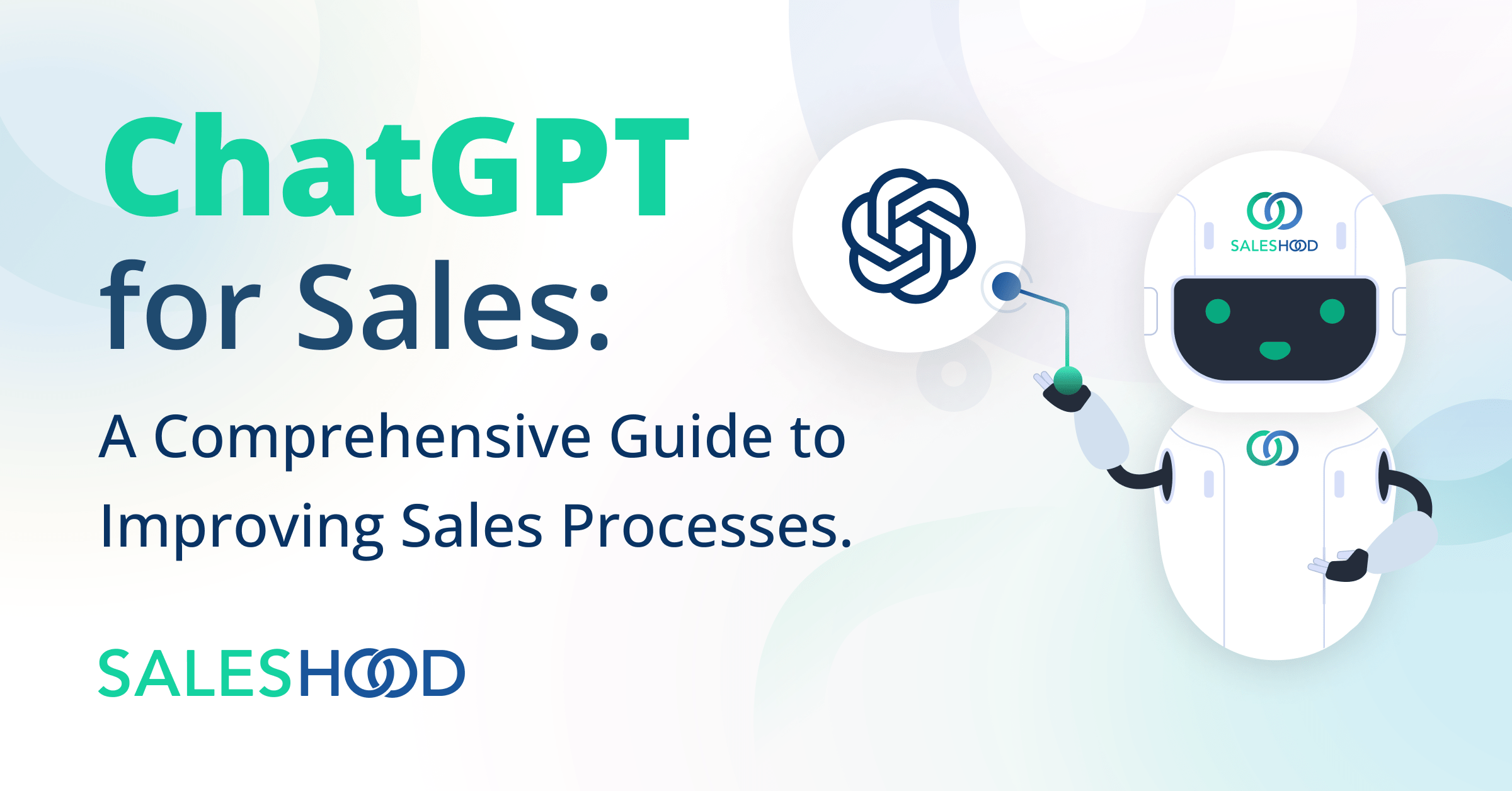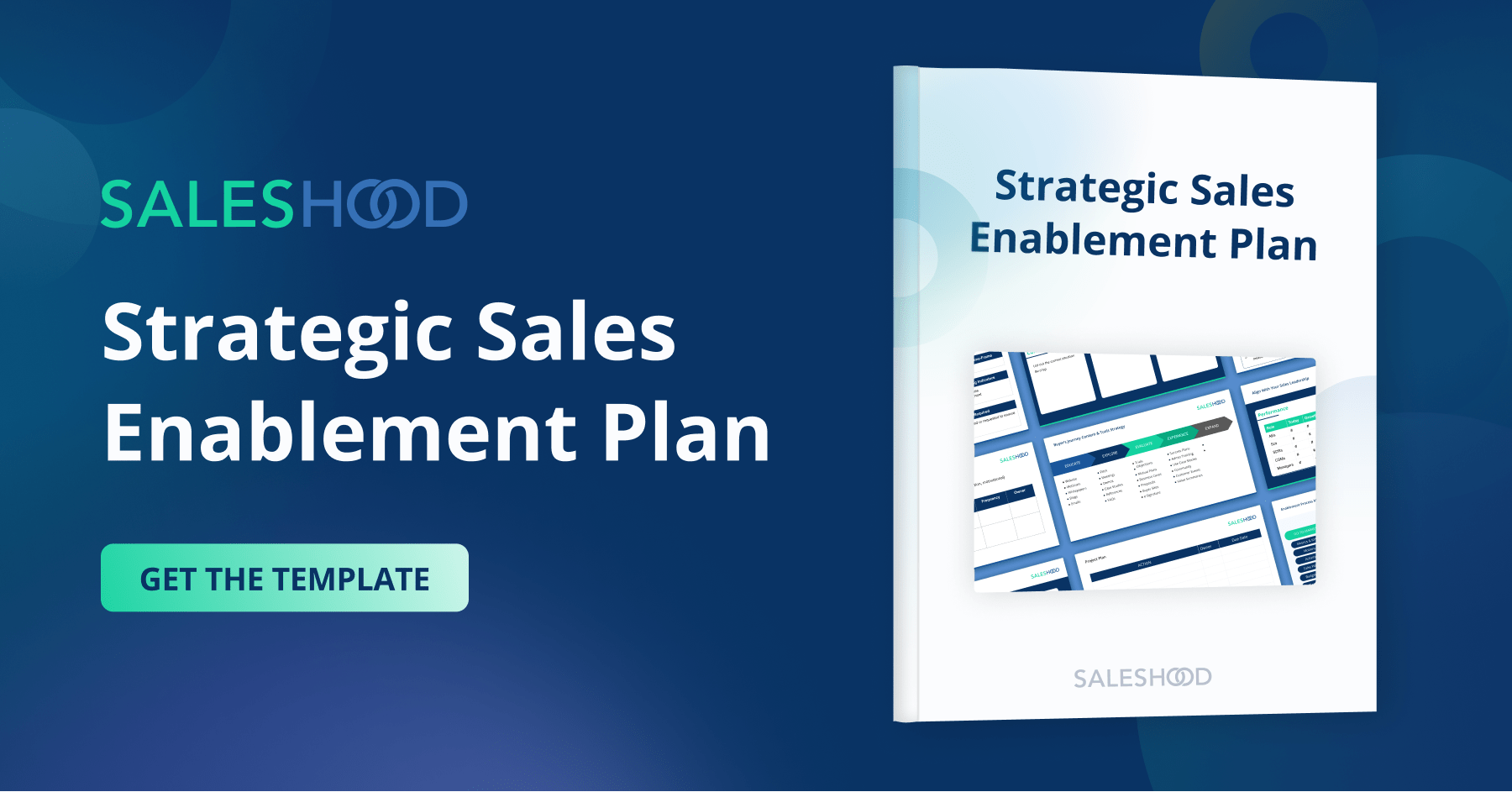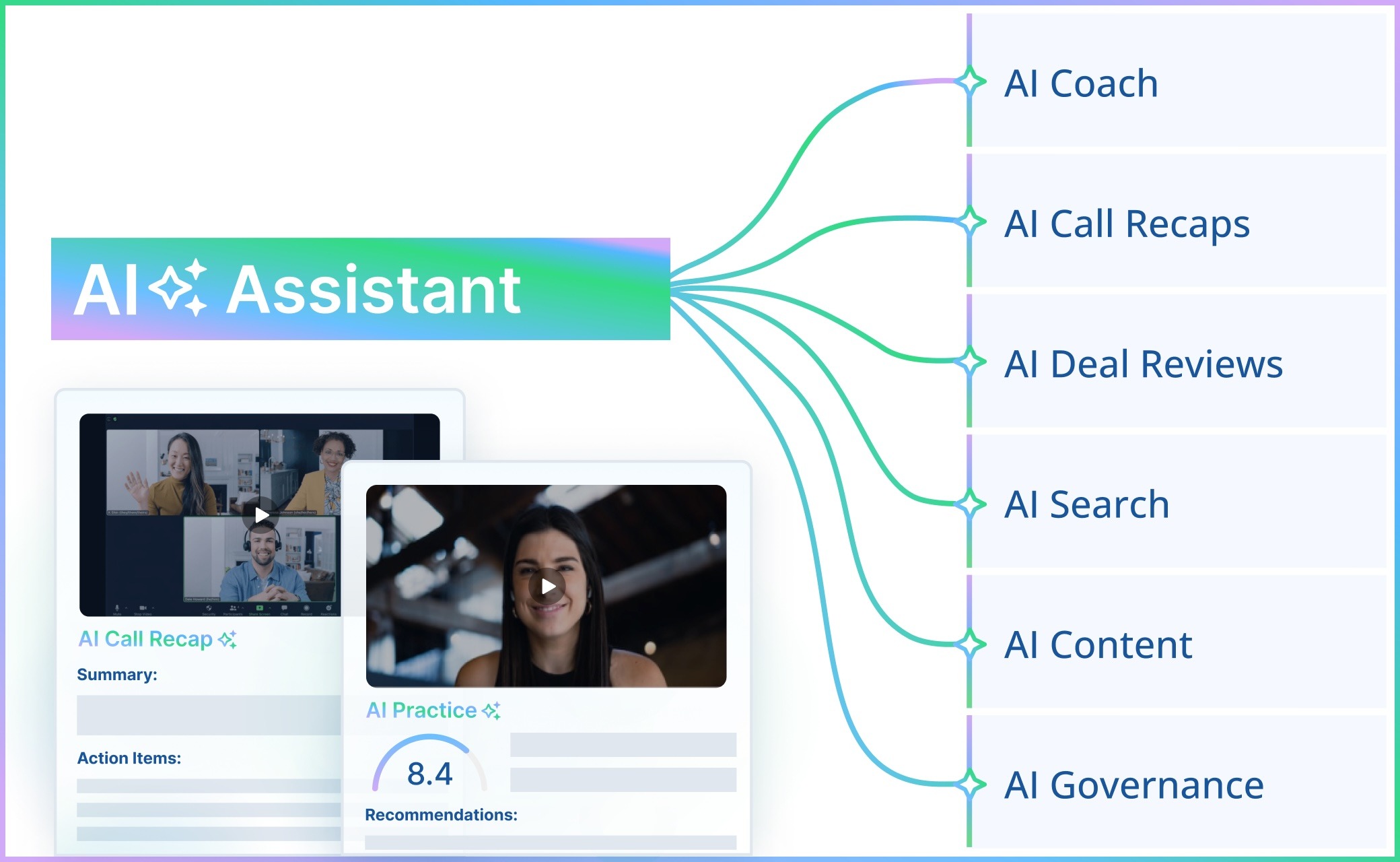Implementing sales enablement software can be a game-changer for organizations looking to improve sales performance and drive revenue growth. Sales enablement’s presence correlates with a 31% improvement in supporting changes in sales messaging and a 15% improvement in improving low-performing salespeople. Having the right team members, sales tools, and systems in place is key to making that possible.
However, there are several mistakes that organizations commonly make when choosing and implementing sales enablement software.
In this blog post, we’ll explore nine common mistakes organizations make when adopting a sales enablement platform. Plus, we’ll offer practical solutions to prevent those mistakes from wreaking havoc.
9 mistakes to avoid when implementing sales enablement software
From lacking needs assessment to lacking coordination between departmental decision-makers, these mistakes can hinder the success of your sales enablement strategy. Take a look at the entire list of most common mistakes and solutions to ensure your implementation is successful.
Mistake #1: Not doing a needs assessment.
Failing to do a thorough assessment of what you want and need before implementation can lead to a variety of issues like failing to align the sales enablement software with the requirements for the business and not having the right resources in place to support the implementation.
Solution: Put in the time to identify the specific objectives, understand the current sales process, determine the success metrics, and uncover any gaps or areas for improvement. It’s essential to involve all relevant team members in this process, not just sales. This includes marketing, operations, other go-to-market teams, and IT. Getting them involved early helps to ensure that all perspectives are considered and gains cross departmental support.
Mistake #2: Lacking clarity about real problems and goals.
Without clear goals and metrics in place, it can be difficult to determine the best implementation efforts to make the biggest impact. This can lead to frustration and doubt early in the process, and ultimately hinder the success of your sales enablement efforts in the long term.
Solution: Analyze your organization’s pain points and get specific about the problems that sales enablement software can solve. This may involve conducting interviews with sales teams, analyzing sales data, and looking at the reasons why certain revenue goals were not achieved.
By gaining a deeper understanding of the challenges facing the organization, you can choose a sales enablement platform that addresses the problems you’re facing, and set measurable goals for how implementing new software will solve them.
Mistake #3: Failing to be agile or adapt to priority changes in direction.
While there are best practices, there is no one-size-fits-all approach to sales enablement. When selecting software to help you along the way, it’s easy to get bogged down in rigid processes and procedures and struggle to adapt to changes in direction or new challenges.
Solution: Develop a plan that can be adjusted as needed, and look for a sales enablement platform that can support you as the business evolves or pivots in direction. Also, look for sales enablement software that is customizable and can adapt to changing needs. The platform you select should be easy to configure and customize.
Mistake #4: Rushing through the sales enablement software vendor vetting process.
Many companies rush through the vendor vetting process, failing to thoroughly evaluate the capabilities and fit of each potential vendor. It’s important to avoid “shiny objects” and stay focused on the solutions offered and how they help you solve your problems. This is understandable, as busy teams have a lot on their plate, but do your due diligence. Otherwise, lacking information may lead you to make a selection that isn’t the best fit for your organization.
Solution: Ask specific questions about the vendor’s approach to sales enablement and how they can help you achieve your specific objectives. Also, evaluate the vendor’s sales enablement software in action. This will certainly involve requesting a demo or trial of the software to see how it works and how it can help you achieve your goals. Don’t be afraid to ask for references from other customers who were facing similar problems and the results they achieved from using their software.
Mistake #5: Not gaining confidence in the software’s capabilities.
To successfully implement sales enablement software, it’s important to have a strong understanding of the software’s capabilities and the technical aspects of how everything works. Without that understanding, you can’t unlock the true potential of sales enablement.
Solution: Look into how a new sales enablement solution will fit in with other technology you use and what it can do. Conduct thorough research on the software’s capabilities, read reviews from other customers, and ask specific questions of the vendor. Also, ensure that the software is compatible with your existing tech stack.
Once you have a strong understanding of the software’s capabilities, it’s important to provide comprehensive training and resources for all users. This may involve creating user guides and training materials, providing hands-on training sessions, and offering ongoing support and resources to help users get the most out of the software. Be sure to research what assets your vendor has available for you so you aren’t starting from scratch.
Data from G2 shows that 84% of sales executives cited content search and utilization as the top productivity improvement area. If your sellers don’t know how to find or use the content in the platform you choose, they won’t be able to perform at their best.
Mistake #6: Lacking coordination between departmental decision-makers.
Too often, organizations make the mistake of believing that sales enablement is only a concern for the sales team, but the reality is that sales enablement contributes directly to the success of the business, and many departments can contribute if given the opportunity to.
Solution: Recognize that sales enablement is a team sport. This means involving key stakeholders from across the organization. By including your stakeholders and establishing clear communication channels, organizations can ensure that everyone is aligned and invested in the success of the sales enablement efforts. This can lead to better decision-making and more effective implementation.
Mistake #7: Failing to get true executive buy-in and sponsorship.
Opening the lines of communication is just the first step to connecting all the dots for sales enablement to be successful. It’s also essential to have the support of senior leadership to ensure that sales enablement efforts are aligned with the overall business strategy.
Solution: Speak to what matters most to decision-makers and show them how sales enablement software can help the organization achieve its overall goals. This may involve highlighting the specific benefits of the software, such as increased sales productivity or improved win rates, and providing data-driven insights to support these claims.
Want more tips on how you can better communicate the impact of your sales enablement strategy and ensure you’re aligned with the C-suite’s priorities? Check out this post: Sales Enablement KPIs: How to WOW the C-Suite
Mistake #8: Not having a detailed go-live plan and launch call.
Without a clear plan for how to launch and get users on board, it can be difficult to get the software up and running effectively. Plus, low adoption rates and engagement with the platform may stop your best efforts in their tracks.
Solutions: Establish a detailed and realistic go-live plan. This plan should include clear timelines, milestones, and responsibilities for everyone involved in the implementation process. It should also take into account any potential roadblocks or challenges that may arise during the implementation process and include contingency plans to address them.
It’s also important to have a launch call with stakeholders to ensure that everyone is on the same page. Include key stakeholders from across the organization, such as sales, marketing, and IT, and provide an overview of the sales enablement software and how it will be rolled out. Your objective here is to provide clear expectations for how the software will be used, share what the desired outcomes are, and give an overview of how you intend to reach them.
Mistake #9: Not executing a quick win after implementation.
Achieving quick wins demonstrates the value of the software and creates enthusiasm across the organization. Without them, stakeholders may become skeptical of the value of the software, which can negatively impact adoption and future results.
Solutions: Start with small, manageable goals that can be easily accomplished with the new sales enablement software. This may involve focusing on specific sales processes or use cases where the software can have an immediate impact. By focusing on these areas, you can demonstrate the value of the software and show stakeholders how it can help them achieve their goals.
Once you achieve some of those quick wins, take note of them and celebrate to build momentum. This may involve sharing success stories with the broader organization, highlighting the impact of the software on key metrics, and recognizing the contributions of team members who have helped make it possible.
Looking for an all-in-one sales enablement software to deliver high-impact enablement programs?
Choosing the right systems and tools plays a critical role in ensuring that your sales enablement efforts drive the outcome you want. To take the next step and learn how to enable your teams with modern sales training, sales coaching, and content management, talk to one of our sales enablement experts. SalesHood powers fast-growing companies with our purpose-built, all-in-one sales enablement platform by activating revenue teams to improve sales effectiveness and sales efficiency.
Read one of these posts for more sales enablement strategy insight and best practices:
How to Build a Sales Enablement Strategy
Creating a High-Impact Sales Enablement Program
Sales Enablement Organizational Structure: Ownership, Reporting, and Ratios



